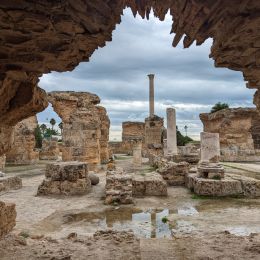Tunis. It’s a fabulous combination of old and new. The ancient ruins of Carthage sit alongside the UNESCO-listed medina and the belle-époque boulevards of the French era. The TGM transport system makes day trips up the coast easy. If you enjoy culture, food, and history without crowds of tourists (but there are lots of locals), then Tunis is a super option. In this visit Tunis guide, I’ll show you exactly how to plan your time: the can’t-miss sights – like Carthage, the Medina, and the Bardo Museum- share simple ideas for getting around, what to eat and where to try it, and easy itineraries for one to three days. I’ll share practical tips on money, SIMs, safety, and the best time to visit, as well as options for where to stay.
THIS POST MAY CONTAIN COMPENSATED AND AFFILIATE LINKS MORE INFORMATION IN OUR DISCLAIMER
Let me set expectations. Tunis is a working capital first of all, a tourist-crowd-free cultural location second. That’s not to say there aren’t crowds, but they just tend to be local. Tunis is good for slow walks, curious detours, and a little patience. Carthage will surprise you – it’s a combination of sites, not just one. You’ll get lost in the Medina. Your cellphone signal can’t guide you out. But someone will help. And getting around here is easy; there are taxis, trams, the TGM, and your own two feet.
TOP THING TO DO
These magnificent set of UNESCO World Heritage sites are stunning. And they’re a set of sites, not just one. This fabulous trip is a great way to explore the best of them with a great guide.
Tunis Orientation
The historic center of Tunis is inland; wrapped around it to the north are the suburbs of La Goulette, Carthage, Sidi Bou Said, and La Marsa. And yes, you’ll want to visit them. And it’s easy, as the TGM rail connects them all to the city.
The city is structured as follows:
- Medina (UNESCO core): The Bab el Bhar, aka the French Gate, marks the eastern entry to the city.
- Ville Nouvelle: East of the Medina along Avenue Habib Bourguiba.
- Bardo Museum: 3 miles (5 kilometers) west of the center; a quick taxi or metro léger ride.
- La Goulette (Halq al-Wadi): 7 miles (11 kilometers) to the northeast; the port is here, and numerous seafood places to eat spots; easy to get to on the TGM.
- Carthage Archaeological Area: 9 miles (15 kilometers) to the northeast; there are LOTS of sites spread along the coast (Byrsa Hill to Antonine Baths).
- Sidi Bou Said: 12 miles (19 kilometers) to the northeast; the “blue and white” clifftop village, it’s easy to get to on the TGM.
- La Marsa: 12 miles (19 kilometers) to the northeast; a relaxed beach suburb, it’s the end of the line of the TGM.
- Tunis–Carthage Airport (TUN): 5 miles (8 kilometers) from the center; a short ride by taxi.
PRACTICAL TRAVEL TIPS
- 🛡️ Get Travel Insurance: Civitatis includes medical expenses, repatriation, theft, luggage delays. No deductibles or upfront payments. Get a quote here.
- 💰 Read about the Currency in Tunisia and ATM fees.
- 🔌 Check out Tunisia’s plug, socket & power situation.
- 📶 Internet, maps and data on the go. eSims for Tunisia
Where is Tunis, Tunisia
Tunis sits on Tunisia’s northeast coast on the Gulf of Tunis, wedged between the Mediterranean and Lake Tunis, with the port suburb of La Goulette linked by causeway. It’s the country’s capital and main transport hub.
Useful distances from the city of Tunis
- The Airport (TUN) is 5 miles (8 kilometers) from the center – my guide to get from the airport is here.
- La Goulette is 7 miles (11 kilometers) away
- Carthage is 9 miles (15 kilometers) from Tunis
- Sidi Bou Said/La Marsa are about 12 miles (19 kilometers) from Tunis
There’s more on the different forms of transport in Tunisia in my guide here.
- Hammamet 40 miles (64 kilometers, 1–1.5 hours’ drive)
- Bizerte 41 miles (66 kilometers, 1–1.5 hours)
- Sousse 92 miles (148 kilometers, 2–2.5 hours)
- Kairouan 98 miles (158 kilometers, 2.5–3 hours) – my guide to visiting Kairouan here.
Typical flight times to Tunis
- London 3 hours
- Paris 2 hours 30 minutes
- Rome 1 hour.
Why come to Tunis?
Well, simply because Tunis combines some of Tunisia’s greatest hits into one easy base. Carthage is the top thing to see here; the coastal ruins are easy to get to. The UNESCO-listed Medina gives you history, crafts, and daily life in one walkable maze. Next, add in wide boulevards, value-for-money food, and easy access to Sidi Bou Said, La Marsa, Hammamet, and beyond, and you’ve got a perfect staging point for your Tunisia itinerary.
The Key Neighborhoods of Tunis
• Medina: A living maze of souks, artisans, and historic mosques. Stay in a restored dar for atmosphere and easy access to Zitouna and the markets. Take a taxi or transfer to gates like Bab el Bhar.
• Ville Nouvelle: Broad, belle-époque avenues (Avenue Habib Bourguiba is the main one), cafes, and the Cathedral of St. Vincent de Paul. This is a straightforward base if you want modern hotels and easy transport.
• Carthage: Upscale residential areas wrap themselves around the top ruins to visit, like Byrsa Hill and the Antonine Baths. This is perfect if your priority is the archaeology and history of the area. It’s quiet at night, and food options are a bit scattered around.
• La Goulette: Port suburb with a laid-back corniche and seafood grill restaurants and cafes. This is a good spot for lunch after visiting Carthage. There’s a TGM stop here.
• Sidi Bou Said: This famous blue-and-white clifftop village has super views and extremely photogenic alleys. It tends to get busy at lunchtime, so if you don’t like crowds, go early or late. There are boutique cafes and guesthouses here, which make it a perfect location for a romantic visit, or it’s a great option for a lazy day trip.
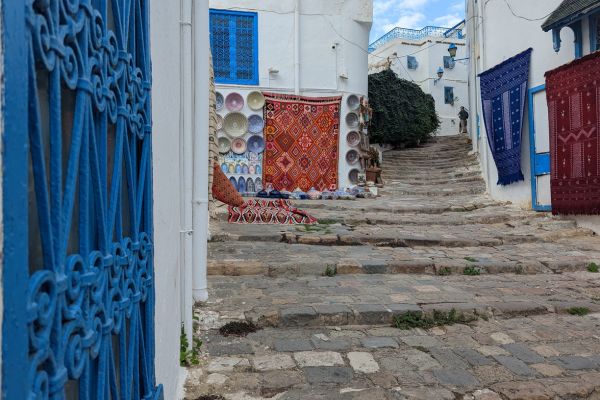
• La Marsa: It’s the end of the line of the TGM regional rail track. Come here for promenade walks, a sandy shore, and a family-friendly atmopshere. It’s a good option for where to stay if you want city of Tunis access, but beach time too.
Getting between all these is easy. The TGM links La Goulette to Carthage and on to Sidi Bou Said and finally La Marsa.
What to See and Do in Tunis
You don’t need a complex plan for Tunis. Explore the old city, see Carthage, and head up the coast. Here are the places to explore in Tunis.
Old City and Ville Nouvelle
You don’t want to be zig-zagging around, so let’s start in the old city and explore, then head further afield.
Enter Bab el Bhar
Also called the Porte de France, this stone gate marks the connection between the old city and the French-era grid system. It’s the best orientation marker in Tunis to figure out where you are. The medina is behind you, the boulevard ahead. Come at golden hour for warm light on the arch and lively street scenes. Taxis know it, so you can easily use it as a pickup point after wandering around. You’ll need cash for taxis in Tunisia, so read my guide to ATMs, cash and currency here.
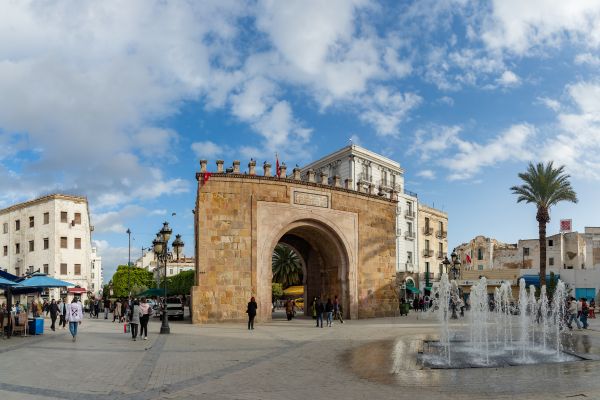
Walk through the Tunis Medina
Enter via the Bab el Bhar gate and head towards the Zitouna Mosque. This is a living market, it’s not just for tourists – but you’ll find your fill of souvenir stalls and shops, there are copperware hammers, spice pyramids, leather, textiles, and of course, hidden courtyards. Go mid-morning when places are open, but visiting day trippers are low in number. Getting there is easy: ask a taxi to Bab el Bhar and continue on foot from there.
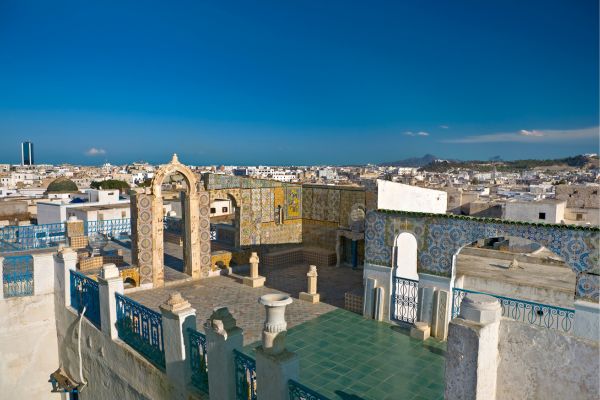
Here’s an easy route through the Medina: Bab el Bhar → perfumers of Souk El Attarine → Zitouna Mosque area → a rooftop café for views → restored caravanserais (foundouk courtyards).
Go to the Central Market of Tunis
Just west of Avenue Habib Bourguiba, the covered market is a snapshot of daily life: glistening fish, mounds of herbs, olives, and dates stacked high. It’s great for photos, but it’s best to ask first. It’s more atmospheric in the morning.
See Zitouna Mosque (Al-Zaytuna)
The city’s spiritual heart sits in the medina’s center. Non-Muslim access varies (we couldn’t get inside), but even from the outside, you can appreciate the geometry of the courtyard. Dress modestly and keep your voice low. Pick a rooftop café nearby – the Cafe Panorama has great views of all of Tunis, the mosque, and surrounding souks (entry is via a carpet shop). You’ll need cash (Tunisian dinars), and opt for a mint tea.
If you want to shop, head to Ville Nouvelle
Avenue Habib Bourguiba and its side streets mix bookshops, patisseries, and modern stores with belle-époque facades. Prices are more fixed than in the souks, and it’s a good place to pick up quality pastries, packaged harissa, and toiletries.
Visit the Cathedral of St. Vincent de Paul
Facing Place de l’Indépendance on Avenue Habib Bourguiba, this Roman Catholic cathedral mixes neo-Byzantine and Moorish styles. Step inside when open (it’s usually free) for cooler air, arches, and stained glass. The square outside is a great place to people-watch.
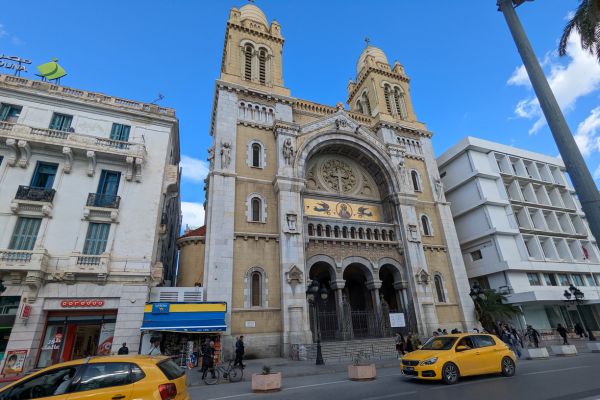
Go and see the closed, but iconic Hotel du Lac
It’s Brutalist design at its very best. And it’s closed, but its still iconic. Designed and built between 1970 and 1973, this is a one of a kind design. You’ve got to ask how its actually still standing, it looks so surreal. And Star Wars fans might recognise it. Was it the inspiration for the Sandcrawler? Who knows, but you should go and see it anyways. If you’re visiting Tunisia and are a Star Wars fan, then head south to Tozeur, there are some great Star Wars movie sites down there.
Here’s my guide to the Star Wars movie sites.
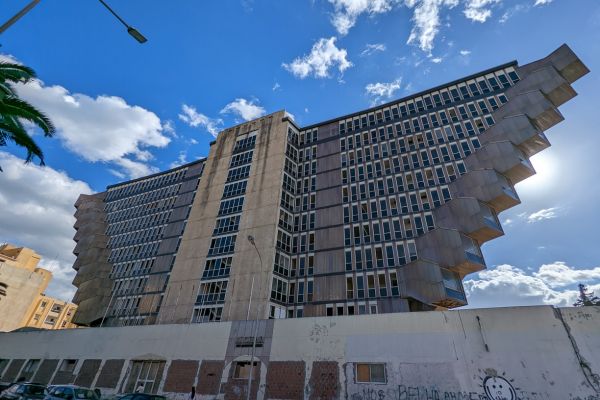
Tunis’s Coast and Ancient Sites
When you’re done with the city, you can hop in a taxi or take the TGM train up the coast. You’ll find all sorts of horror stories about the safety of these trains, but just be situationally aware and watch your bags. We didn’t experience any problems and used it daily during each of our visits to Tunis. I didn’t, however, get my phone out while on the train.
Visit the Ruins of Carthage
Carthage isn’t one site; it’s a series of them spread along the coast about 9 miles (15 kilometers) from central Tunis. My guide to visiting the Carthage sites is here. You should go to Antonine Baths for an idea of the scale of the site and the sea views, then Byrsa Hill for the museum and a city panorama. A combined ticket covers multiple locations. Buy it at your first stop and don’t lose it.
You can take the TGM to the Carthage Hannibal stop, or La Goulette Neuve for the Salammbo sacrificial structure, and then easily walk between the various sites. Pick up a taxi if it’s hot. You’ll need at least half a day to do the ruins justice. Take water, wear a sun hat, and stop regularly for refreshments.
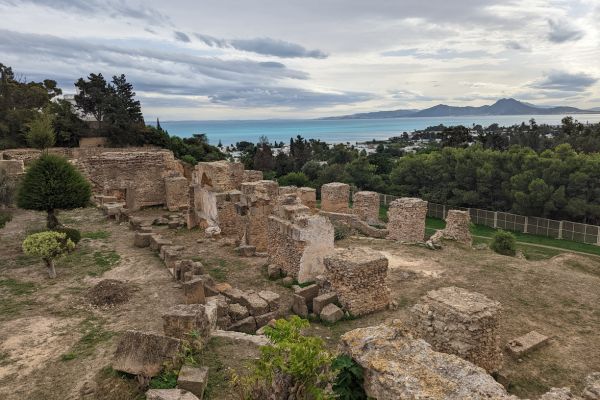
Have a seafood meal in La Goulette.
This is a great place to break up your Carthage day – grilled fish or seafood on the corniche in La Goulette, about 7 miles (11 kilometers) from the center. There’s a TGM stop here, so it’s easy to get to. There’s more breeze on the corniche – and it’s best to pick a spot that has fresh-looking fish on ice outside, and confirm the price. Eat with salad and harissa. Yum.
Stroll around Sidi Bou Said
Picture perfect blue-and-white lanes, bougainvillea, and cliff-edge views over the gulf. It’s the Instagrammer’s dream. So come early to avoid them. Stay for coffee. Eat a late lunch (I recommend Chez Weld Moufida and the dish of the day. Get off the TGM at the Sidi Bou Said stop and walk up the hill. The traditional doors and tilework are incredibly picturesque.
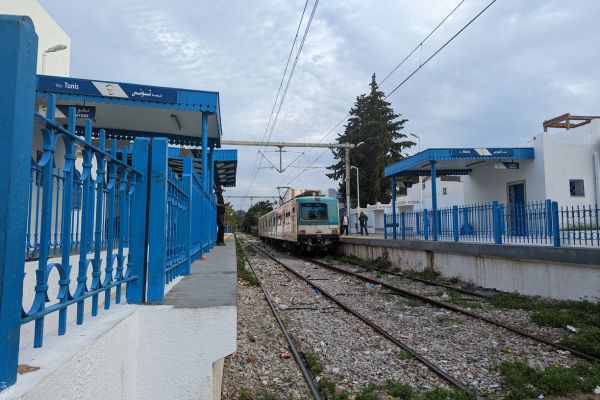
Chill out in La Marsa
The final stop on the TGM takes you to this breezy beach suburb with a promenade, sandy shore, and sunset cafés. If you don’t want to take the TGM, hop in a taxi. It’s a great way to chill out and relax after museums, ruins, and medina visits.
Museums in Tunis
I could list out a whole heap of museums here, from the National Military Museum to the Currency museum, but really, there’s only one that you *should* visit. And that’s the Bardo.
Visit the Bardo Museum
It might be the only museum you visit in Tunisia (if you’re open to more, I recommend the Dar Cherait Museum in Tozeur, but that’s a long way south!). And you couldn’t wish for a better one. The Bardo National Museum is a few miles west of the center of Tunis and contains artifacts from Carthage and the world’s largest collection of Roman mosaics. It’s housed in a 19th-century palace.
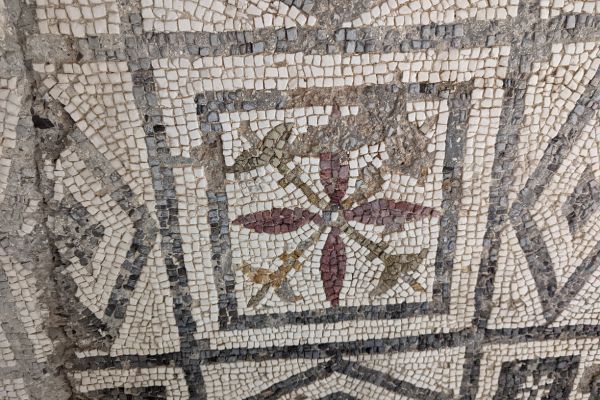
It’s less crowded in the morning, you’ll need at least two hours, and you can either take the metro from the Gare de Tunis or a taxi. It’s usually open 09:00 until 17:00, but NOT on Mondays. It’s best to check for holiday closures when you’re in town.
What to Eat in Tunis.
Tunisian food is bold, aromatic, and coastal-Mediterranean at heart—think olive oil, citrus, seafood, grilled meats, and a confident kick of harissa. Influences combine Berber, Arab, Ottoman, Italian, and French, so you’ll find both souk-side snacks and contemporary meals worth slotting into your schedule. Here’s what you should try.
Brik
A thin, crisp pastry (malsouka) folded around egg, tuna, and capers, flash-fried so the yolk runs when you crack it.
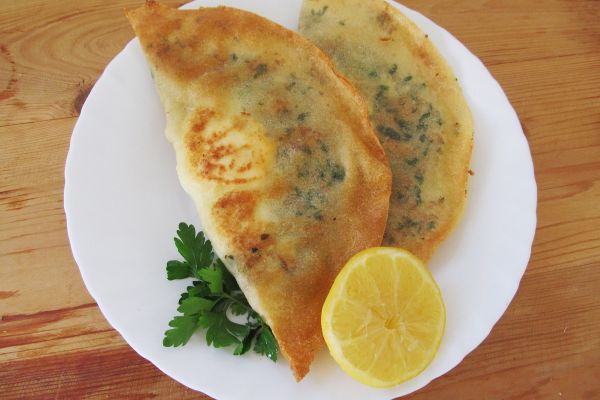
Ojja
A spicy tomato and pepper stew, often with merguez and eggs poached directly in the sauce; perfect with bread for scooping. Like Shakshouka? You’ll love Ojja.
Fresh pomegranate juice
Despite all my best-laid plans to avoid street food in case I got sick, this is one thing that I cannot resist. If it’s in season, then don’t miss it. It’s pressed to order, sweet-tart, and refreshing. You’ll find it in markets easily.
Dates
If you haven’t eaten dates in Tunisia, then I’d argue that you haven’t been to Tunisia. The local varieties are chewy and honeyed; try them plain, stuffed with almonds, or dipped in sesame for road snacks. There’s more on dates in my guide to Tozeur, which is famous for the deglet-en-nour date.
Fricassé
A small, savory fried roll stuffed with tuna, potato, olives, capers, and harissa makes a fabulous handheld street food lunch.
Kafteji
Chopped fried vegetables (pumpkin, peppers, potato) tossed with eggs and harissa, usually served with bread or tucked in a sandwich.
Lablabi
Hearty chickpea soup with garlic, cumin, lemon, and harissa, finished with bread chunks and often a soft egg on top.
Chevrette
It’s not a dish, but a tiny Gulf-of-Tunis shrimp, quickly sautéed or fried; great as a seaside plate with lemon and a dab of harissa.
Salade mechouia
Fire-roasted peppers and tomatoes chopped with garlic and olive oil, sometimes topped with tuna, egg, or cheese.
Couscous
Steamed semolina with a light broth, vegetables, and fish or meat; coastal kitchens often do an excellent fish couscous.
Mlawi
Flaky, pan-cooked flatbread layered with oil; eat it plain, with honey, or wrapped around egg and harissa for breakfast. Stuff it with anything you want!
Bambaloni
It’s basically a ringed doughnut, fried and dusted with sugar; best warm on the street with coffee.
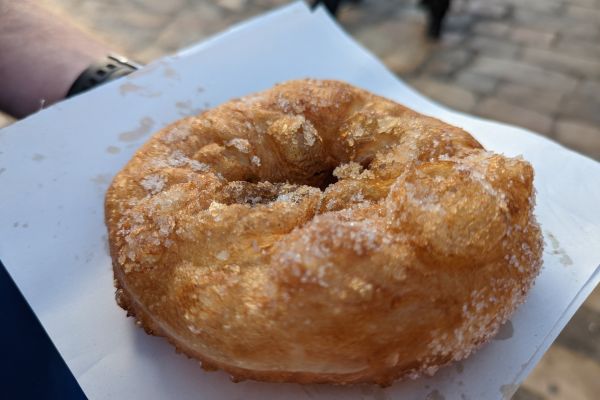
Makroudh
Semolina pastries filled with dates and scented with orange blossom, then fried or baked and glazed for a rich finish.
How to Get to Tunis
Tunis is easiest to reach by air, with frequent flights from Europe and North Africa into Tunis–Carthage. Ferries also run to La Goulette from France and Italy. (Check the timetables here)
Flying to Tunis
Fly into Tunis–Carthage (TUN), which is around 5 miles (8 kilometers) from the center. The quickest ride in is a taxi (5–20 minutes depending on traffic). There’s no Bolt anymore. The Government shut it down in May 2025. Public buses exist and are dirt cheap, but are slow, and if you’ve got luggage, sometimes a pain. If you’re staying near the Medina or Avenue Habib Bourguiba, ask to be dropped at Bab el Bhar or a nearby landmark. My guide on getting from the airport to the city is here.
Ferry to Tunis
Car/passenger ferries sail to La Goulette (the port suburb of Tunis) from France (e.g., Marseille) and Italy (e.g., Genoa or Sicily), with schedules that vary by season. Crossings are overnight or long day trips; cabins are worth it on busy summer sailings. If you’re not driving, then it’s an easy taxi ride, or TGM ride into the center of Tunis; it’s roughly 7 miles (11 kilometers).
How to Get Around Tunis
Oh, you’ve got lots of options and none of it is expensive.
- The Metro léger (tram): The light-rail network is cheap and reliable for cross-city trips. Buy a paper ticket at station kiosks, validate before boarding, and keep it for inspections. It’s most convenient for getting to the Bardo Museum.
- TGM (Tunis–Goulette–Marsa): This coastal rail links La Goulette, Carthage, Sidi Bou Said, and La Marsa. The trains run frequently during the day, and you can buy tickets and validate them at stations.
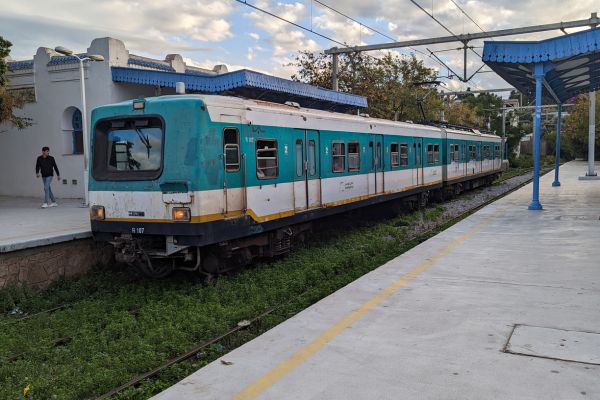
- Taxis: Yellow taxis are metered; make sure they turn it on.
- Bolt is no longer available in Tunisia (since May 2025)
- Walking: Ideal inside the Medina and along Avenue Habib Bourguiba.
Money, Currency & Paying in Tunis
The currency is the Tunisian dinar (TND), a closed currency, so you won’t get it outside the country. You’ll need to use a card and withdraw or exchange inside Tunisia, and keep receipts if you plan to reconvert on departure.
ATMs are widespread around Avenue Habib Bourguiba, malls, and TGM hubs; there are fewer inside the deep Medina. Cash is king for markets, taxis, kiosks, and smaller cafes; cards (Visa/Mastercard) are common at hotels, museums, and mid-range restaurants.
You’ll need to carry small notes and coins for tram and TGM tickets.
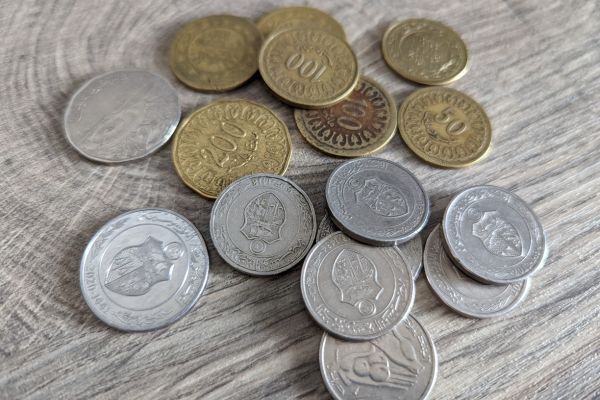
Internet and SIM Cards in Tunis
Data is cheap and coverage is pretty good around the Tunis area, aside from the narrow streets of the medina, where signals are really limited. You can be online as soon as you land with an eSIM. Or you can buy a tourist SIM at the airport or in city branches, but you’ll need to have your passport with you. The main operators are Tunisie Telecom, Ooredoo, and Orange.
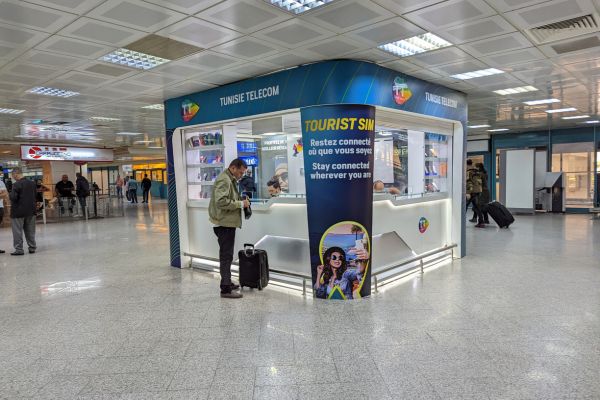
Prepaid packs usually come with a few gigabytes, and you can top up at kiosks and corner shops with scratch cards. eSIMs work if your phone supports them, but local physical SIMs are usually a better value.
Travel Tips for Tunis
- Language – Arabic and French dominate; you’ll hear some English around the Medina, major sights, and hotels. A few French phrases DEFINITELY go a long way.
- Safety in Tunis – keep bags zipped and in front of you on trams, the train, and metros, and in the Medina; avoid quiet alleys late; use taxis at night.
- Take Toilet Paper – if you find a public toilet or a toilet in a café likely not to have it. Take antibac hand gel too.
- Smoking – there’s nothing you can do about it, just be aware that lots of people smoke here, and you should expect it in many cafés and outdoor terraces; pick well-ventilated seating if it bothers you.
- Alcohol – you won’t find it in many cafes. You’ll need to look for licensed restaurants.
- Clothing Etiquette: cover shoulders and knees for mosques and conservative areas; remove shoes where required; always ask before photographing people.
- Friday and holidays: prayer times can shift opening hours; double-check museums and government sites.
- Bargaining: polite haggling is normal in souks; start at roughly half and meet in the middle.
- Water: tap water is treated, but I wouldn’t drink it without a filter water bottle (we use this one), but you can buy bottled water pretty much anywhere.
- Power and plugs: You’ll find type C and type E sockets; 230 V. My guide to the type of adapter you’ll need is here.
How long to spend in Tunis
If you’re tight on time, one full day here will get you around the major sights, but you’ll have to get a shift on. You’ll need a half-day in Carthage, then the Medina and Avenue Habib Bourguiba before sunset.
If you have two days, then you can give Carthage a decent half to three-quarters of a day, then get lost a few times in the Medina, find the Central Market, Bab el Bhar, and the cathedral.
If you can manage three days, add Sidi Bou Said and spend an afternoon in La Marsa, and you can also take a half day in the Bardo Museum.
Remember, Carthage is a series of separate sites with walking or transport required between them, so it always takes longer than it looks on the map. Getting an early start is better if you can.
Suggested Itineraries for Tunis
Here are some short and simple plans you can follow as-is or tweak to taste.
1 day in Tunis
08:30 Take the TGM to Carthage. See the Antonine Baths first, then Byrsa Hill and the small museum.
12:30 Lunch in La Goulette on the corniche.
15:00 Taxi to Bab el Bhar, wander the Medina to the Zitouna area, and relax in a rooftop café.
18:00 Stroll Avenue Habib Bourguiba and the cathedral square.
20:00 Dinner near Ville Nouvelle or back by the Medina gates.
2 days in Tunis
Day 1: Explore Carthage until mid-afternoon, eat seafood in La Goulette, then take the TGM to Sidi Bou Said for amazing views and coffee.
Day 2: Get lost in the Medina and Central Market in the morning, visit the Bardo Museum after lunch, people watch as you wander the boulevards, and then have dinner in a traditional restaurant.
When to visit Tunis
Spring and autumn are the best times to visit. March to May brings mild, bright days, and comfortable walking weather; the sea is cool, but the coastal air is fresh. September to November stays warm, the sea is swimmable through early autumn, and crowds thin after summer; expect the first rains by late October.
June to August is hot across the day, especially inland and at Carthage, where shade is scarce nonexistent. Plan for early starts, long lunches, and late afternoons; the sea breeze helps along the coastal arc. Follow the locals, and you’ll see the city come alive after dark.
December to February is the coolest and wettest period. It’s great for museums, medina cafés, and lower prices, but pack a light jacket and expect occasional showers and wind.
Ramadan shifts each year; opening hours for sights, cafés, and transport can change, and some restaurants won’t serve alcohol. Fridays can mean shorter hours at religious sites.
Where to Stay in Tunis
Stay in the Medina for atmosphere, Carthage for archaeology access, or La Marsa for an easy beach day with city links. All three work without a car; taxis and the TGM connect them quickly.
Stay in the medina for an atmospheric stay — Dar el Medina.
Dar el Medina puts you inside the UNESCO medina of Tunis: You’ll find restored courtyards, carved doors, and rooftop views over Zitouna’s domes. Rooms here are characterful, air-conditioned, and all quiet once the souks close. Breakfast is enormous, and this is ideal if you want dawn-to-dusk browsing, easy café breaks, and short walks to major sights. Book early, it’s rightly very popular.
To be near the Carthage ruins — Villa Didon.
Villa Didon sits above the Carthage sites, pairing mid-century lines with bay views. You’re minutes from Byrsa Hill and a short taxi to Antonine Baths. This is a great location for archaeology-first itineraries, sunset drinks, and quieter nights. Expect modern comforts, on-site dining, and access via TGM or taxi. Pick a sea view, it’s bliss.
Beachfront bliss in La Marsa — Dar Corniche La Marsa
Dar Corniche La Marsa gives you adult-only sea breezes, sandy strolls, and café culture at the TGM terminus. Rooms are relaxed with balconies and lots of light. This is the perfect place for slow mornings and sunset swims. Heading into the city? Easily hop on the TGM or grab a taxi downtown. Book early and snag the sea view.
TUNISIA TRAVEL RESOURCES
AIRPORT TRANSFERS
24/7 pickup & drop off. Trusted, local English speaking drivers. Prebook & prepay online with cards.
Book a Transfer
HOTELS AND APARTMENTS
See choices here
Sea view rooms? Budget rooms? Need a washing machine? The best choice of hotels & apartments.
TOURS & ATTRACTIONS
Most excursion choices, small group tours, skip-line tickets, free cancellation and top local guides.
Top options here.
CAR RENTAL OPTIONS
Choose cars here
Best choice of vehicles, automatics, large or small cars, child seats. Book early for more options.
Final Words on Visiting Tunis, Tunisia
Tunis is a working capital with heavyweight history, coastal breezes, and prices that still feel friendly. Make sure you plan on Carthage taking at least half a day, and then try and balance the Medina with the Bardo’s mosaics, and the blue-and-white calm of Sidi Bou Said. Tunis is a great “lived-in” city, and perfect for the adventurous explorer.
ASocialNomad is a participant in the Amazon Services LLC Associates Program, an affiliate advertising program designed to provide a means for sites to earn advertising fees by advertising and linking to amazon.com, amazon.co.uk, and amazon.ca. Amazon and the Amazon logo are trademarks of Amazon.com, Inc. or its affiliates. As an Amazon Associate, I earn from qualifying purchases.

